K-wire fixation
1. General considerations
Introduction
K-wire fixation is optimal for fracture fixation in pediatric patients. In some cases, it can be used in adults with the disadvantage of not producing interfragmentary compression to reduce the articular surface gap. It also needs longer support with a splint to prevent fracture displacement.
At least two K-wires need to be inserted in a diverging or converging manner for optimal rotational stabilization.
Reduction can be achieved in a closed or open manner. Closed reduction is easier with acute fractures and has the advantage of sparing the hematoma. Anatomical reduction is key to avoiding posttraumatic arthrosis.
There is a high risk of non- or malunion and wire-track infection (osteitis).

Since fragments in this segment are generally smaller than in the proximal phalanx, management and stabilization can be more of a challenge.
Tiny and fragile fragments can not be fixed with K-wires.
Anatomical reduction mandatory
Although the distal interphalangeal (DIP) joint is somewhat forgiving, articular fractures should be reduced anatomically. Otherwise, the articular cartilage may be damaged, leading to painful degenerative joint disease and digital deformity.
At the DIP joint, this can well be dealt with by arthrodesis, which is a procedure with very predictable outcome, without any major perturbances of the finger.
This illustration shows how even slight unicondylar depression may lead to angulation of the finger.
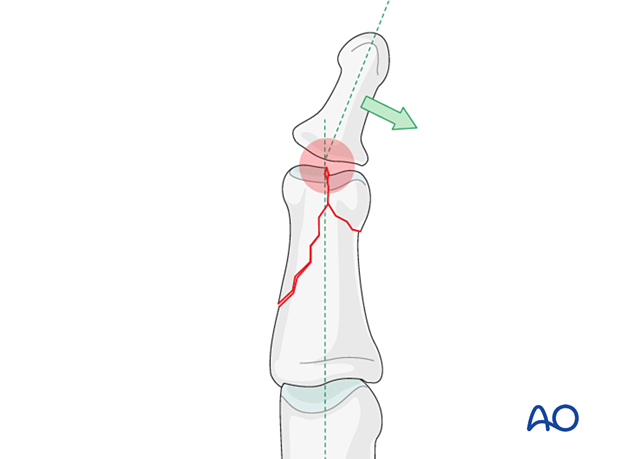
Outcome
Outcome of middle phalangeal fractures is usually more favorable than in the proximal phalanx. This is largely due to the fact that limitation of DIP joint motion is not such a disability as similar stiffness of the PIP and MCP joints.
2. Patient preparation
Place the patient supine with the arm on a radiolucent hand table.
WALANT is recommended to check stability of fixation and associated tendon lesions with active movement.

3. Reduction
Reduction starts with traction to restore length.
Exert lateral pressure with your thumb and index finger or with dedicated percutaneous reduction forceps to reduce the fracture.
Confirm reduction with an image intensifier.
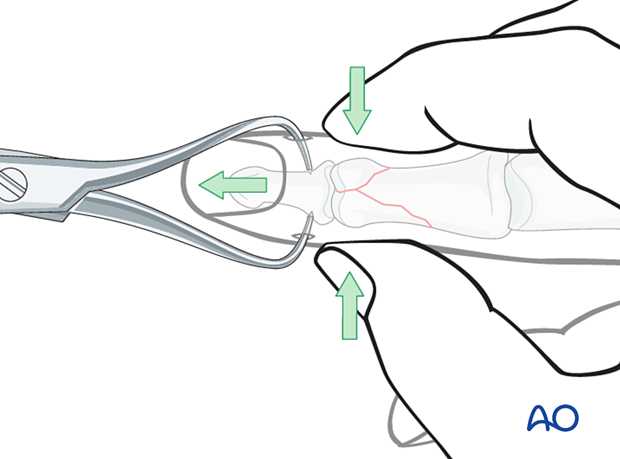
Small pointed reduction forceps can be used for larger fragments gently to rock the fracture from side to side. Be careful not to apply excessive force as this can lead to fragmentation. Consider lag-screw or plate fixation.
Confirm reduction with an image intensifier.

4. Fixation
Insert two to three K-wires in different directions crossing the fracture planes through both cortices. The K-wire tracks should not cross each other near the fracture plane.
The wire should be inserted in the coronal plane, to avoid impaling any tendons. Ensure that the point of entry in the side of the finger is dorsal to the neurovascular bundle.
Use a fine drill guide through a small stab incision.
Insert the wire into the far fragment, then confirm reduction before advancing into the near fragment.
Make sure that the tip of the wire engages the opposite cortex but does not project beyond it.
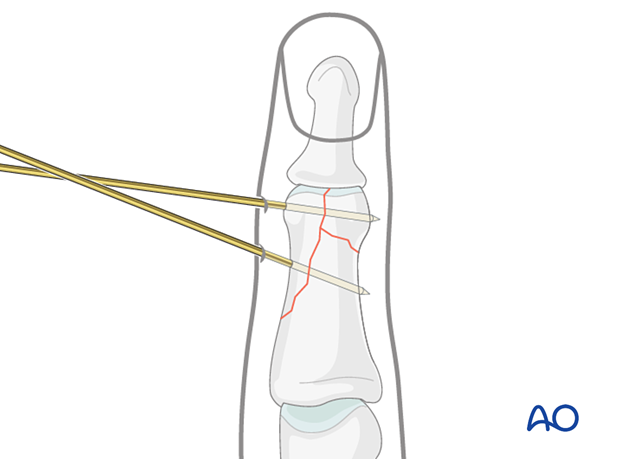
The ends of the K-wires may be left protruding the skin for later removal or buried under the skin.
To protect the skin, bend the K-wire ends with pliers in an L- or U-shape. Leave sufficient K-wire length outside of the skin to accommodate swelling.

5. Checking alignment
Identifying malrotation
At this stage, it is advisable to check the alignment and rotational correction by moving the finger through a range of motion.
Rotational alignment can only be judged with the fingers in a degree of flexion, and never in full extension. Malrotation may manifest itself by overlap of the flexed finger over its neighbor. Subtle rotational malalignments can often be judged by tilting of the leading edge of the fingernail when the fingers are viewed end-on.
If the patient is conscious and the regional anesthesia still allows active movement, the patient can be asked to extend and flex the finger.
Any malrotation is corrected by direct manipulation and later fixed.

Using the tenodesis effect when under anesthesia
Under general anesthesia, the tenodesis effect is used, with the surgeon fully flexing the wrist to produce extension of the fingers and fully extending the wrist to cause flexion of the fingers.
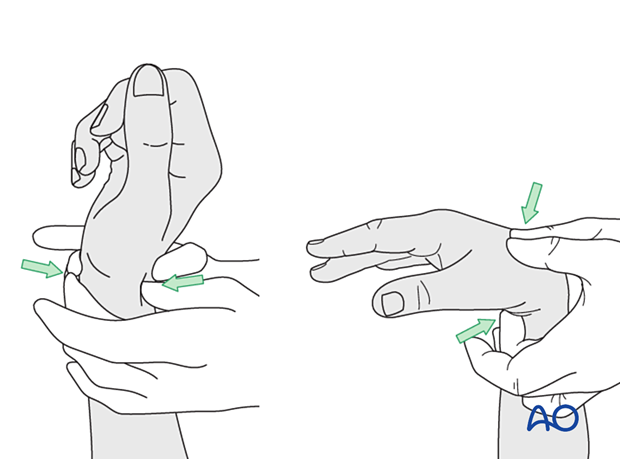
Alternatively, the surgeon can exert pressure against the muscle bellies of the proximal forearm to cause passive flexion of the fingers.
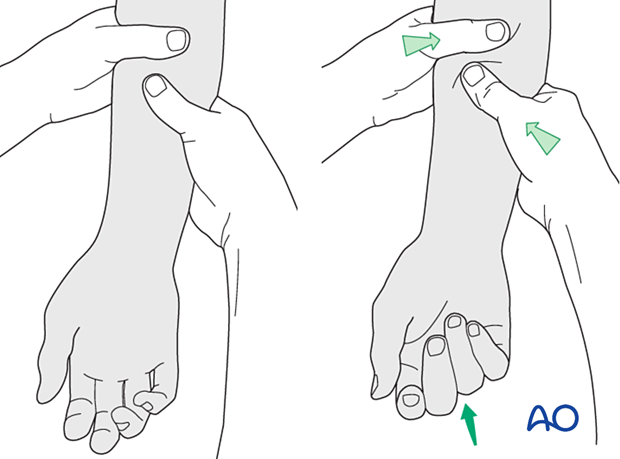
6. Final assessment
Confirm fracture fixation and stability with an image intensifier.
Check stability of the fixation by passive flexion and extension of the DIP joint, and by applying gentle lateral and rotational motion. This will help to determine stability to establish strategies for rehabilitation.
In rare cases, these fractures may be associated with tendon injuries. Assessment should exclude such complications.
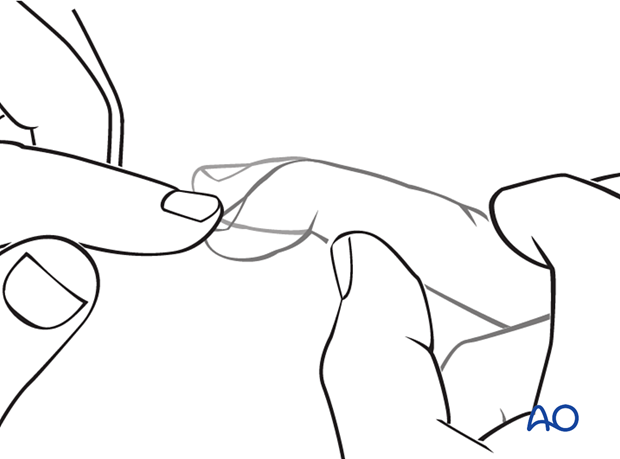
7. Aftercare
Postoperative phases
The aftercare can be divided into four phases of healing:
- Inflammatory phase (week 1–3)
- Early repair phase (week 4–6)
- Late repair and early tissue remodeling phase (week 7–12)
- Remodeling and reintegration phase (week 13 onwards)
Full details on each phase can be found here.
Postoperative treatment
If there is swelling, the hand is supported with a dorsal splint for a week. This should allow for movement of the unaffected fingers and help with pain and edema control. The arm should be actively elevated to help reduce the swelling.
The hand should be immobilized in an intrinsic plus (Edinburgh) position:
- Neutral wrist position or up to 15° extension
- MCP joint in 90° flexion
- PIP joint in extension
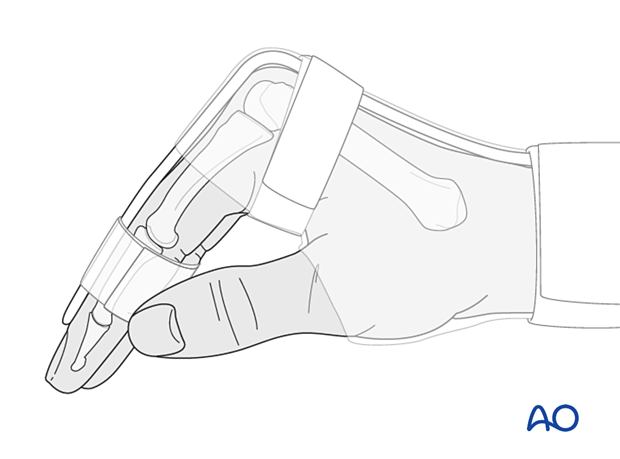
The MCP joint is splinted in flexion to maintain its collateral ligaments at maximal length to avoid contractures.
The PIP joint is splinted in extension to maintain the length of the volar plate.
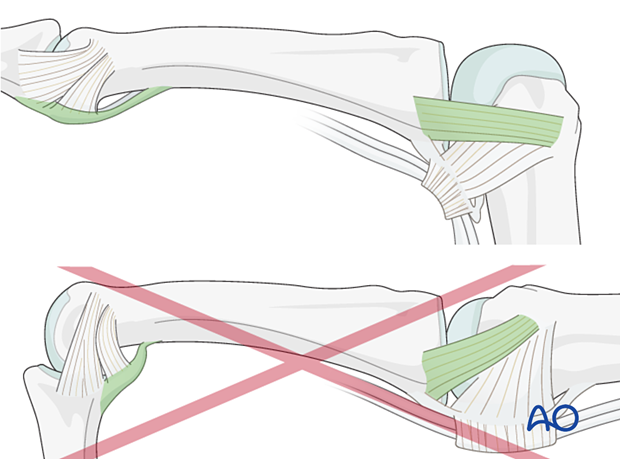
Immobilizing the DIP joint
After swelling has subsided, the DIP joint is protected in extension with a palmar splint, leaving the PIP joint free. Either an alumaform splint, or a custom-made thermoplastic splint can be used.
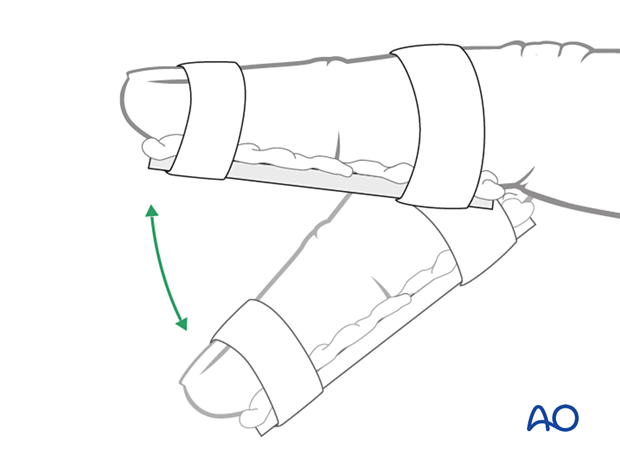
Follow-up
The patient is reviewed frequently to ensure progression of hand mobilization.
In the middle phalanx, the fracture line can be visible in the x-ray for up to 6 months. Clinical evaluation (level of pain) is the most important indicator of fracture healing and consolidation.
Mobilization
If the fixation is stable enough, the patient is encouraged to take off the splint 2–3 times daily, and to commence with gentle active exercises.
After 3 weeks, the splint is removed, and unrestricted active flexion and extension are permitted.
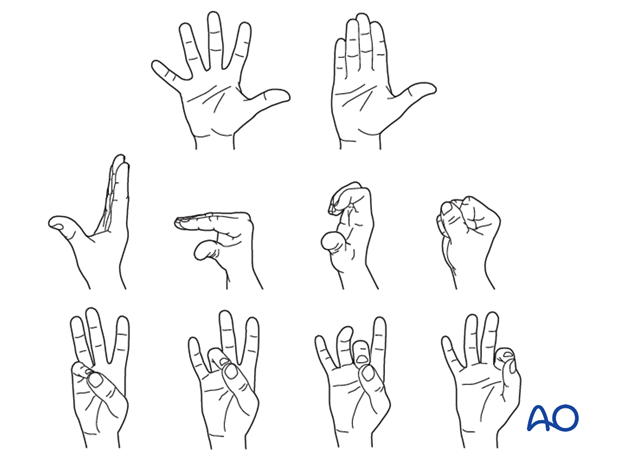
Implant removal
K-wires can be removed once consolidation of the fracture is visible.













